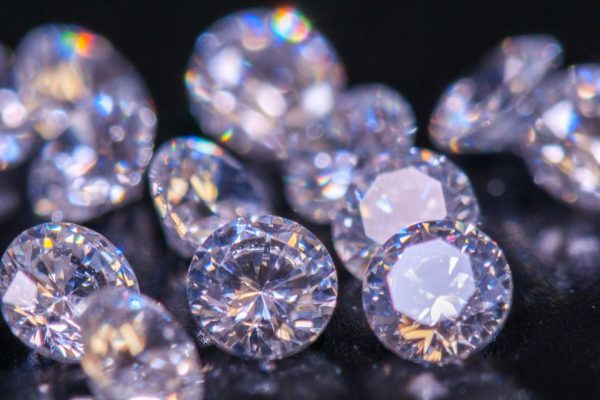After experiencing a surge during the pandemic, diamond prices have now plummeted to multi-year lows, signalling a significant shift in the market. A recent report from McKinsey & Co. attributes this downturn to several factors, including the rise of lab-grown diamonds (LGDs), increased consumer demand for ethical sourcing, and ongoing geopolitical tensions.
By Ryan Chigoche
During the COVID-19 pandemic, the diamond market saw unexpected price increases as postponed engagements and weddings drove a surge in demand. Constrained supply chains and consumer interest in luxury purchases, even during confinement, further inflated prices. However, as global supply chains stabilize and traditional purchasing cycles resume, diamond prices are now on a downward trajectory.
The Rise of Lab-Grown Diamonds
A key driver of this decline is the rapid rise of LGDs, which offer consumers a more affordable and ethically sourced alternative to natural diamonds. LGDs, indistinguishable from their mined counterparts, can cost up to 80% less, making them increasingly attractive to price-conscious and sustainability-minded consumers.
According to McKinsey & Co., LGDs have disrupted traditional diamond markets by undercutting prices and challenging long-established business models. For many consumers, LGDs also carry fewer ethical concerns, as they do not involve mining, which is often associated with environmental harm and human rights issues.
Ethical and Sustainable Sourcing
The growing demand for transparency and sustainability in the diamond industry is reshaping consumer preferences. Many buyers now prioritize ethical sourcing, seeking verifiable evidence of how and where diamonds are mined. Companies that adopt technologies like blockchain for traceability and secure third-party certifications are gaining a competitive edge.
Geopolitical Tensions and Market Pressures
Geopolitical tensions, particularly sanctions against Russia—a major supplier of rough diamonds—have further disrupted the global diamond supply chain. These sanctions have not only reduced the availability of Russian diamonds but also contributed to price volatility, intensifying pressure on natural diamond producers.
Zimbabwe, the world’s seventh-largest diamond producer, is also facing challenges. While the country’s diamond output increased by 15% in 2023, GlobalData projects a compound annual decline of 1.25% in production between 2023 and 2027. Exports from Zimbabwe rose by 13% in 2023, but they are expected to decline at a CAGR of 3.58% over the same period, adding uncertainty to global supply dynamics.
A Market at a Crossroads
The diamond market remains particularly vulnerable to shifts in consumer demand, given its business-to-consumer (B2C) nature. Inflationary pressures and changing buyer preferences have further strained the industry.
McKinsey & Co. notes that rough diamond prices, which peaked in early 2022, have since fallen sharply. This has impacted downstream players such as retailers and cutting centres, who now face high inventory costs and narrowing margins.
Adapting to a Changing Landscape
To stay competitive, natural diamond producers must innovate, prioritize sustainability, and embrace transparency. High-cost exclusivity is no longer sufficient in a market where affordability and ethical sourcing dominate consumer priorities. Adopting technologies like blockchain for traceability and committing to sustainable practices will be crucial for regaining consumer trust.
Meanwhile, LGD producers are scaling up production and leveraging their ethical and environmental advantages. With production costs continuing to fall, LGDs are positioned for sustained growth, particularly as consumers increasingly prioritize responsible luxury.
The Future of the Diamond Industry
According to McKinsey & Co., the diamond industry is at a pivotal moment. Companies that adapt to these changing dynamics by aligning their products with evolving consumer values and market trends will be best positioned for long-term success.
The industry’s future lies in providing sustainable luxury that resonates with today’s conscious consumers. While it remains uncertain whether the traditional diamond market will rebound or if LGDs will dominate, one thing is clear: innovation, transparency, and sustainability will define the next chapter of the diamond industry.
.png)




